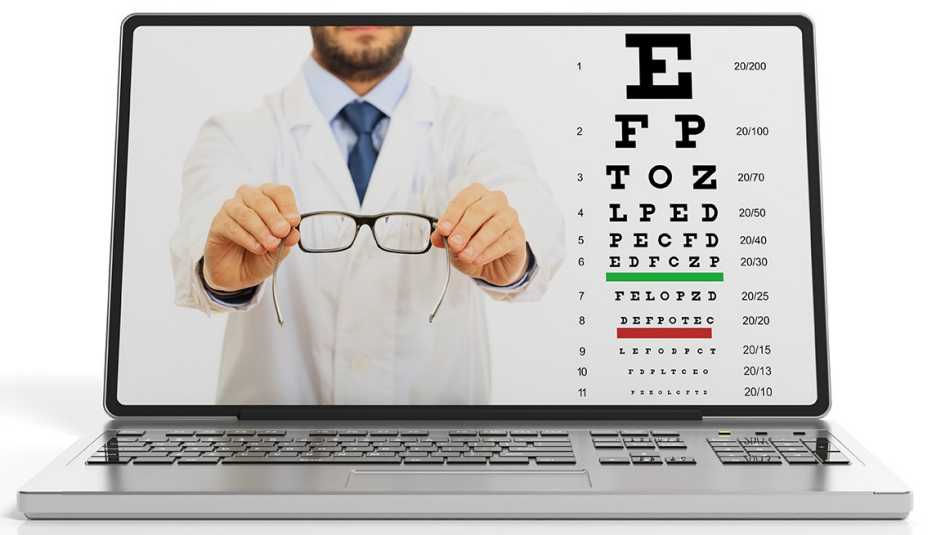AARP Hearing Center


The ads are seductive. For the millions of Americans who are skipping eye doctor visits because of the pandemic, remote telehealth eye exams seem to be the perfect solution: a way to renew or update eyeglass or contact lens prescriptions from the comfort of home, or have a potential eye condition assessed.
The pandemic has accelerated the use of telemedicine, which has increased by as much as 700 percent, according to some estimates. This trend has been fueled by greater patient acceptance of the efficacy of video visits, the relaxing of regulatory restrictions on its use, increased payments to health care providers for remote visits and the ongoing need for social distancing. And it can allow people with mobility or health issues to safely get the care they need.
But in many cases, such as emergencies or to diagnose serious eye conditions — or even something as seemingly simply as renewing your eyeglass prescription — telemedicine is no substitute for in-person exams.
In a few situations, however, remote exams can be useful:

































































More on health
Smart Ways to Save Money on Eyeglasses
How to find good-quality products at a reasonable price8 Tips for Vision Health During the Pandemic
Here’s how to protect yourself at a time that fewer people are going to the eye doctor